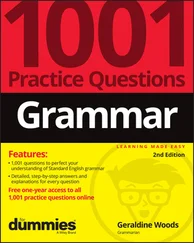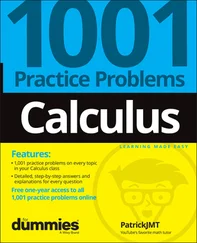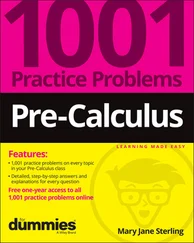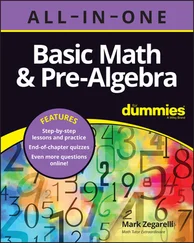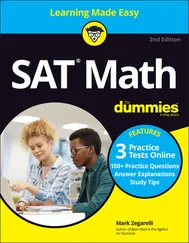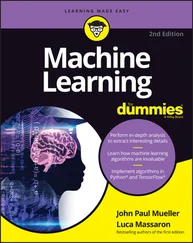
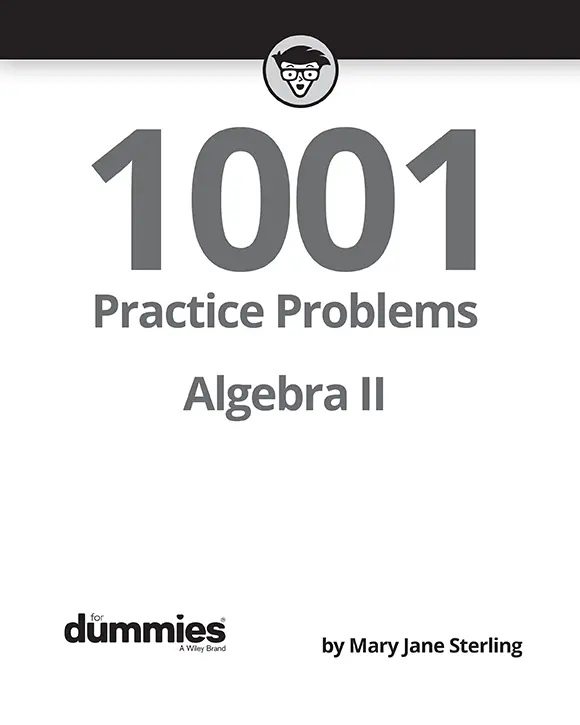
Algebra II: 1001 Practice Problems For Dummies®
Published by: John Wiley & Sons, Inc.,111 River Street, Hoboken, NJ 07030-5774, www.wiley.com
Copyright © 2022 by John Wiley & Sons, Inc., Hoboken, New Jersey
Published simultaneously in Canada
No part of this publication may be reproduced, stored in a retrieval system or transmitted in any form or by any means, electronic, mechanical, photocopying, recording, scanning or otherwise, except as permitted under Sections 107 or 108 of the 1976 United States Copyright Act, without the prior written permission of the Publisher. Requests to the Publisher for permission should be addressed to the Permissions Department, John Wiley & Sons, Inc., 111 River Street, Hoboken, NJ 07030, (201) 748-6011, fax (201) 748-6008, or online at http://www.wiley.com/go/permissions .
Trademarks:Wiley, For Dummies, the Dummies Man logo, Dummies.com, Making Everything Easier, and related trade dress are trademarks or registered trademarks of John Wiley & Sons, Inc., and may not be used without written permission. All other trademarks are the property of their respective owners. John Wiley & Sons, Inc. is not associated with any product or vendor mentioned in this book.
LIMIT OF LIABILITY/DISCLAIMER OF WARRANTY: WHILE THE PUBLISHER AND AUTHORS HAVE USED THEIR BEST EFFORTS IN PREPARING THIS WORK, THEY MAKE NO REPRESENTATIONS OR WARRANTIES WITH RESPECT TO THE ACCURACY OR COMPLETENESS OF THE CONTENTS OF THIS WORK AND SPECIFICALLY DISCLAIM ALL WARRANTIES, INCLUDING WITHOUT LIMITATION ANY IMPLIED WARRANTIES OF MERCHANTABILITY OR FITNESS FOR A PARTICULAR PURPOSE. NO WARRANTY MAY BE CREATED OR EXTENDED BY SALES REPRESENTATIVES, WRITTEN SALES MATERIALS OR PROMOTIONAL STATEMENTS FOR THIS WORK. THE FACT THAT AN ORGANIZATION, WEBSITE, OR PRODUCT IS REFERRED TO IN THIS WORK AS A CITATION AND/OR POTENTIAL SOURCE OF FURTHER INFORMATION DOES NOT MEAN THAT THE PUBLISHER AND AUTHORS ENDORSE THE INFORMATION OR SERVICES THE ORGANIZATION, WEBSITE, OR PRODUCT MAY PROVIDE OR RECOMMENDATIONS IT MAY MAKE. THIS WORK IS SOLD WITH THE UNDERSTANDING THAT THE PUBLISHER IS NOT ENGAGED IN RENDERING PROFESSIONAL SERVICES. THE ADVICE AND STRATEGIES CONTAINED HEREIN MAY NOT BE SUITABLE FOR YOUR SITUATION. YOU SHOULD CONSULT WITH A SPECIALIST WHERE APPROPRIATE. FURTHER, READERS SHOULD BE AWARE THAT WEBSITES LISTED IN THIS WORK MAY HAVE CHANGED OR DISAPPEARED BETWEEN WHEN THIS WORK WAS WRITTEN AND WHEN IT IS READ. NEITHER THE PUBLISHER NOR AUTHORS SHALL BE LIABLE FOR ANY LOSS OF PROFIT OR ANY OTHER COMMERCIAL DAMAGES, INCLUDING BUT NOT LIMITED TO SPECIAL, INCIDENTAL, CONSEQUENTIAL, OR OTHER DAMAGES.
For general information on our other products and services, please contact our Customer Care Department within the U.S. at 877-762-2974, outside the U.S. at 317-572-3993, or fax 317-572-4002. For technical support, please visit https://hub.wiley.com/community/support/dummies .
Wiley publishes in a variety of print and electronic formats and by print-on-demand. Some material included with standard print versions of this book may not be included in e-books or in print-on-demand. If this book refers to media such as a CD or DVD that is not included in the version you purchased, you may download this material at http://booksupport.wiley.com . For more information about Wiley products, visit www.wiley.com .
Library of Congress Control Number: 2022935108
ISBN: 978-1-119-88356-2 (pbk); 978-1-119-88357-9 (ebk); 978-1-119-88358-6 (ebk)
Algebra II: 1001 Practice Problems For Dummies®
To view this book's Cheat Sheet, simply go to www.dummies.comand search for “Algebra II: 1001 Practice Problems For Dummies Cheat Sheet” in the Search box.
Table of Contents
1 Cover
2 Title Page
3 Copyright
4 Introduction What You’ll Find How This Workbook Is Organized Beyond the Book Where to Go for Additional Help
5 Part 1: The Questions Chapter 1: Reviewing Algebra Basics The Problems You’ll Work On What to Watch Out For Multiplying Binomials and Trinomials Using Pascal’s Triangle to Multiply Binomials Solving Linear Equations Solving Linear Equations for Variables Solving Linear Inequalities Making Radical Expressions Simpler Working with Complex Expressions Chapter 2: Solving Quadratic Equations and Nonlinear Inequalities The Problems You’ll Work On What to Watch Out For Applying the Square Root Rule on Quadratic Equations Solving Quadratic Equations Using Factoring Using the Quadratic Formula to Solve Equations Recognizing and Solving Quadratic-Like Equations Completing the Square to Solve Quadratic Equations Combining Methods When Solving Quadratic Equations Solving Quadratic Inequalities Using Number Lines Chapter 3: Solving Radical and Rational Equations The Problems You’ll Work On What to Watch Out For Solving Rational Equations Taking on Radical Equations Involving One Radical Term Solving Radical Equations with Multiple Radical Terms Chapter 4: Graphs and Equations of Lines The Problems You’ll Work On What to Watch Out For Sketching Lines Using a Point and Slope Writing Equations of Lines Given Point and Slope Writing Equations of Lines Given Two Points Finding Equations of Parallel Lines Writing Equations of Perpendicular Lines Chapter 5: Functions The Problems You’ll Work On What to Watch Out For Determining a Function’s Domain and Range Finding Inverses of Functions Recognizing Even and Odd Functions Performing the Composition Operation on Functions Creating a Difference-Quotient and Simplifying Evaluating Piecewise Functions for Particular Inputs Chapter 6: Quadratic Functions and Relations The Problems You’ll Work On What to Watch Out For Determining the Vertex and Intercepts of a Parabola Writing Equations of Parabolas in a Standard Form Sketching Graphs of Parabolas Using Quadratic Equations in Applications Chapter 7: Polynomial Functions and Equations The Problems You’ll Work On What to Watch Out For Recognizing the Intercepts of Polynomials Factoring by Grouping to Solve for Intercepts Applying the Rational Root Theorem to Find Roots Performing Synthetic Division to Factor Polynomials Evaluating Polynomials for Input Values Investigating End-Behavior of Polynomials Sketching the Graphs of Polynomial Functions Chapter 8: Rational Functions The Problems You’ll Work On What to Watch Out For Investigating the Domain of a Rational Function Determining a Function’s Removable Discontinuity Evaluating a Function When x Is Infinitely Large or Small Determining a Function’s Infinite Limit Writing Equations of Asymptotes Adding Oblique Asymptotes to the Mix Sketching the Graphs of Rational Functions Chapter 9: Exponential and Logarithmic Functions The Problems You’ll Work On What to Watch Out For Evaluating Exponential Functions for Input Evaluating Exponential Functions in Base e Sketching the Graphs of Exponential Functions Finding Values of Logarithmic Expressions for Given Input Evaluating Natural Logarithms in Base e Sketching the Graphs of Log Functions Rewriting a Log Function as Its Exponential Inverse Changing Exponential Functions to Logarithmic Inverses Solving Exponential Equations Solving Logarithmic Equations Chapter 10: Conic Sections The Problems You’ll Work On What to Watch Out For Rewriting Equations of Parabolas in Standard Form Determining a Vertex, Focus, Directrix, and Axis of Symmetry Sketching the Graph of a Parabola Rewriting a Circle’s Equation in Standard Form Identifying the Center and Radius of a Circle Sketching the Graph of a Circle Writing an Ellipse’s Equation in Standard Form Identifying the Center,
Читать дальше



